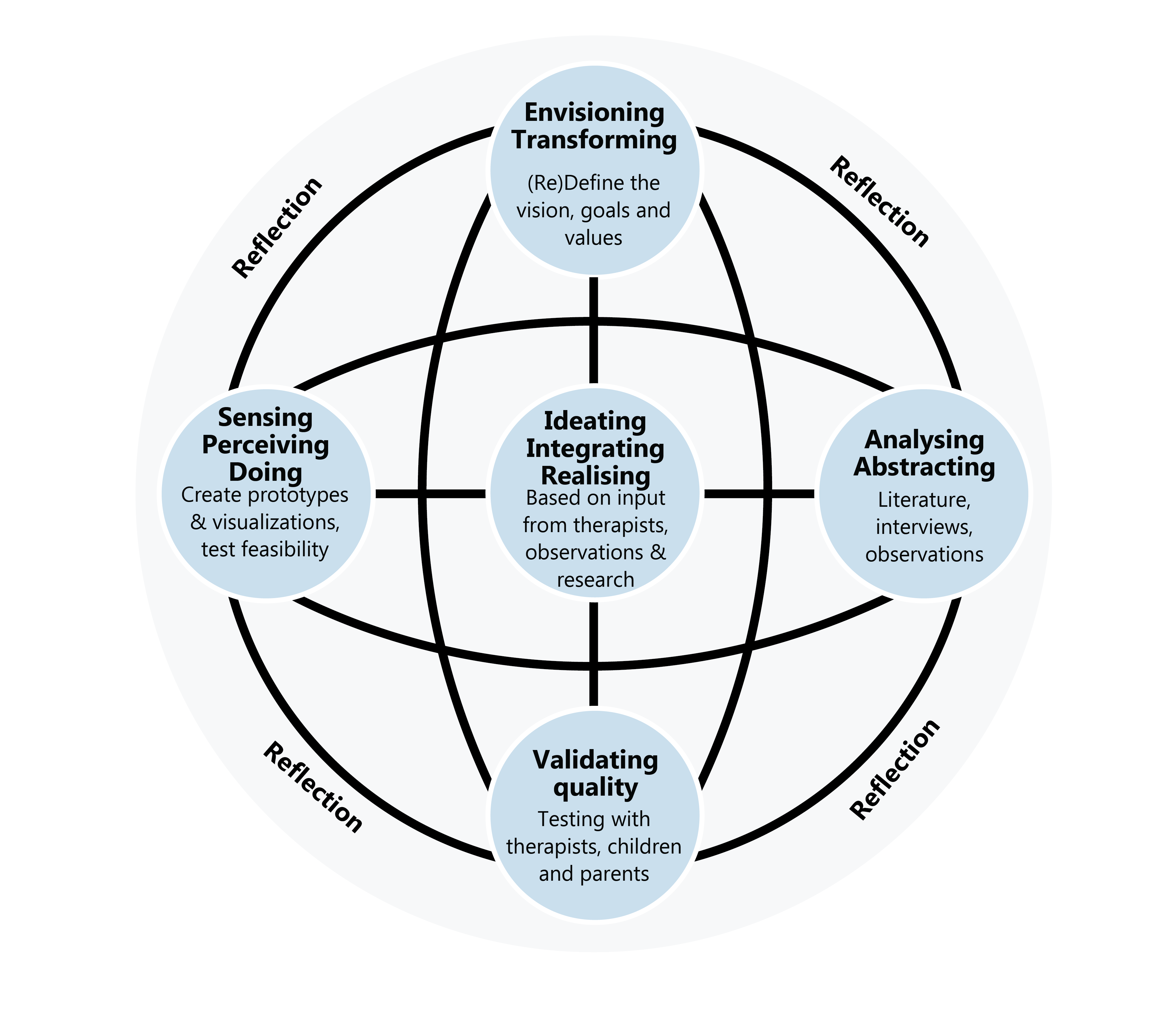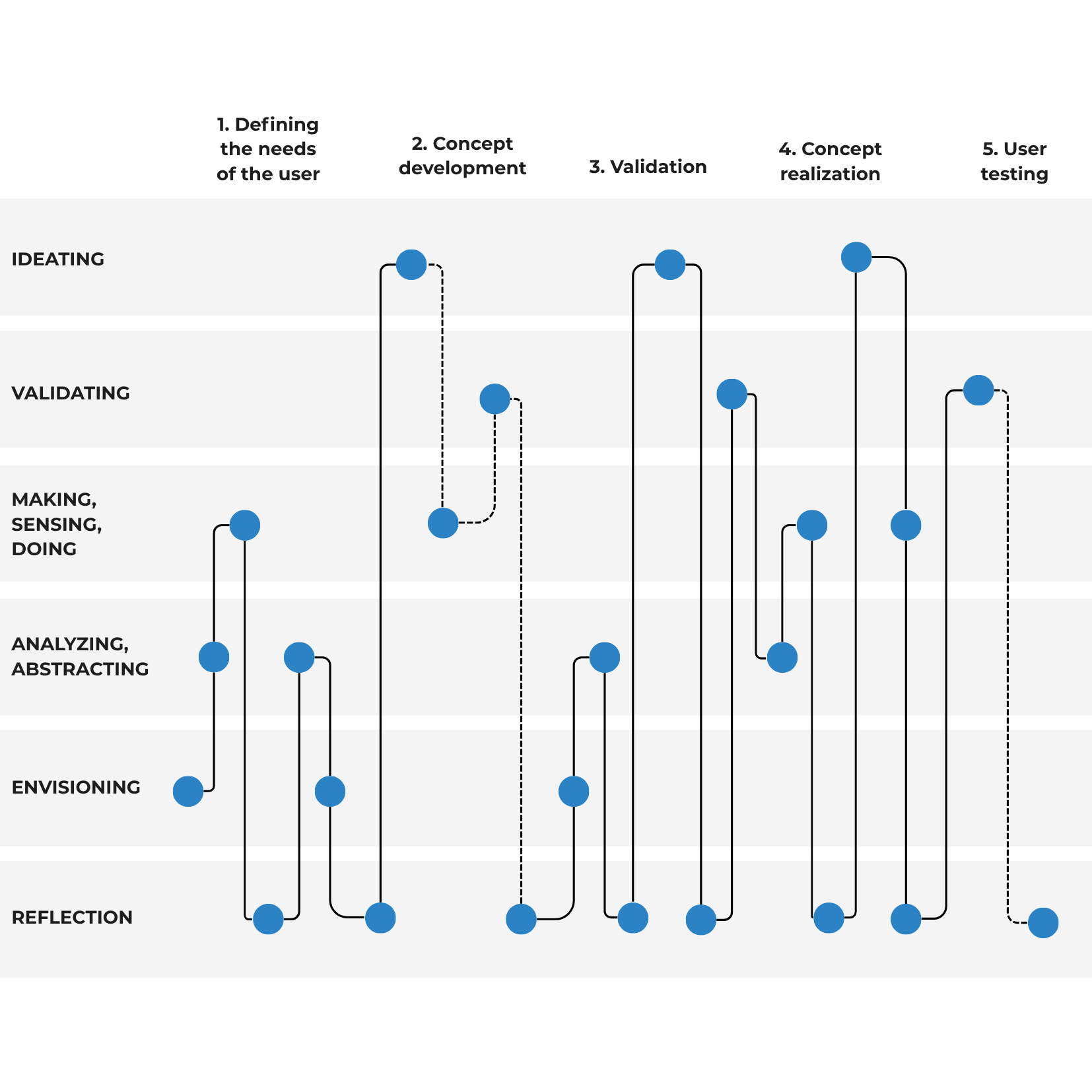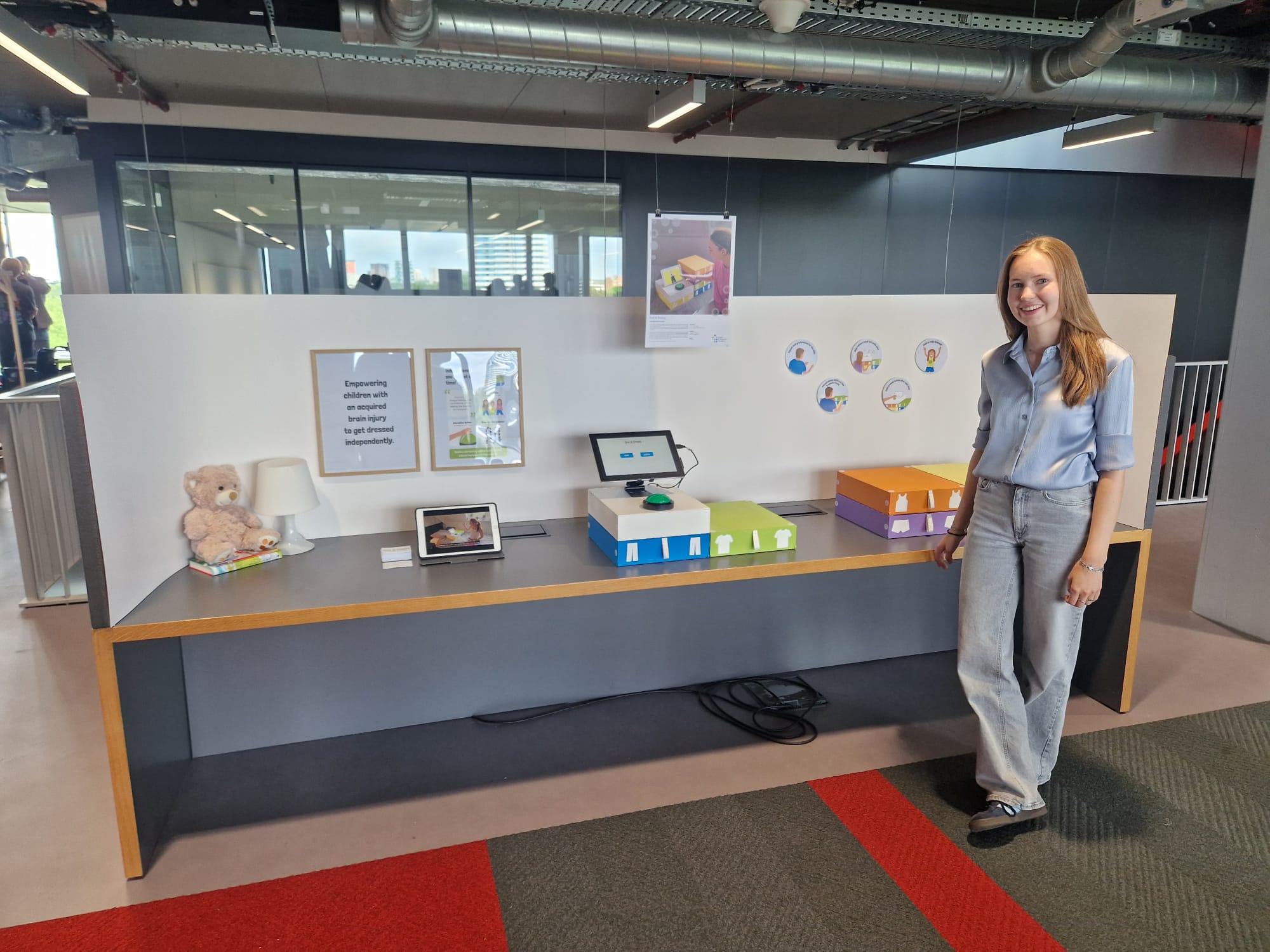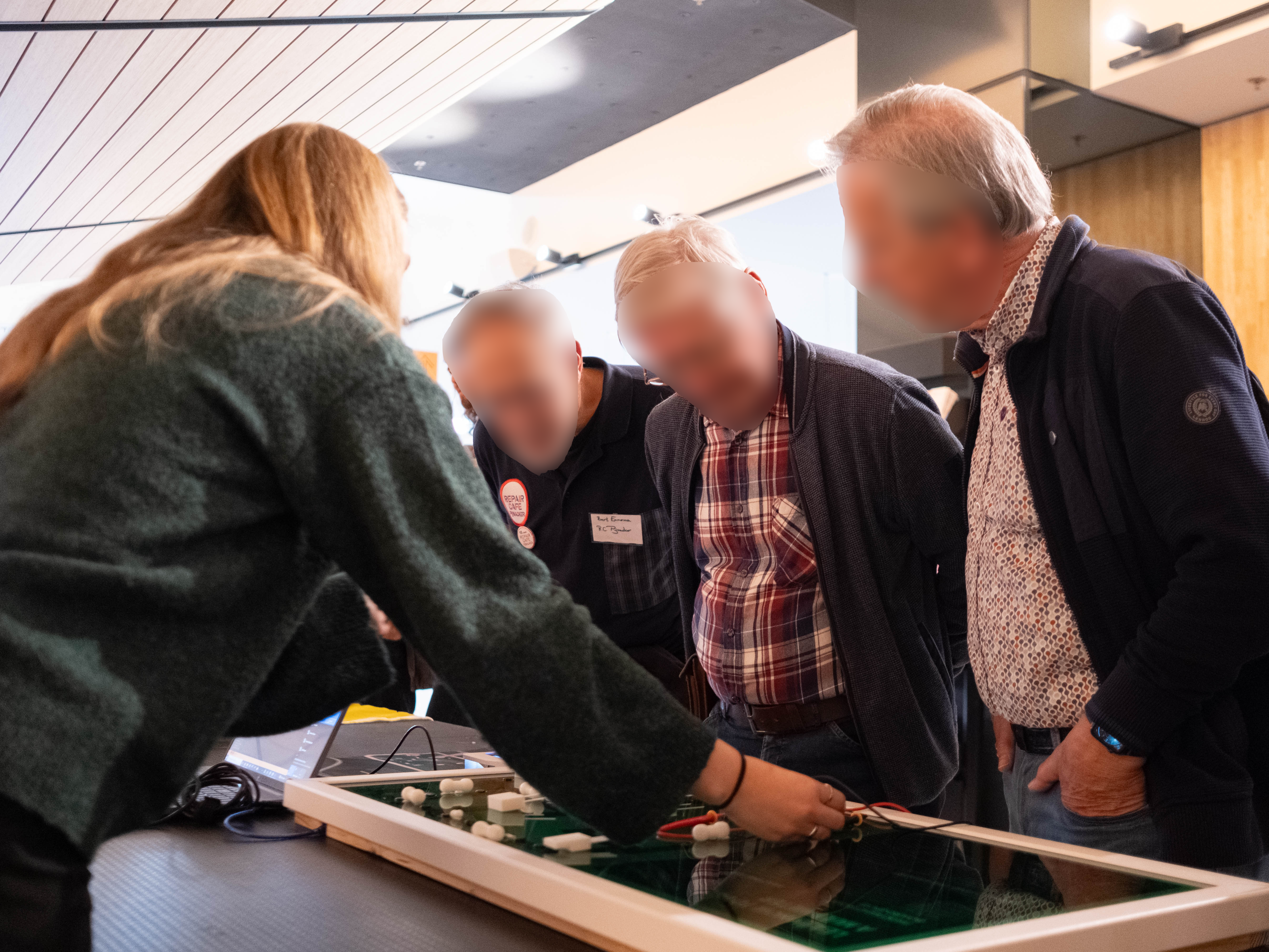During my bachelor’s I gained experience in all expertise areas, as described below. In my past semester, I tried to achieve the goals stated in the following PDP:
The following expertise area web provides an overview of the expertise I gained during my bachelor and what I aim to focus on during my master:
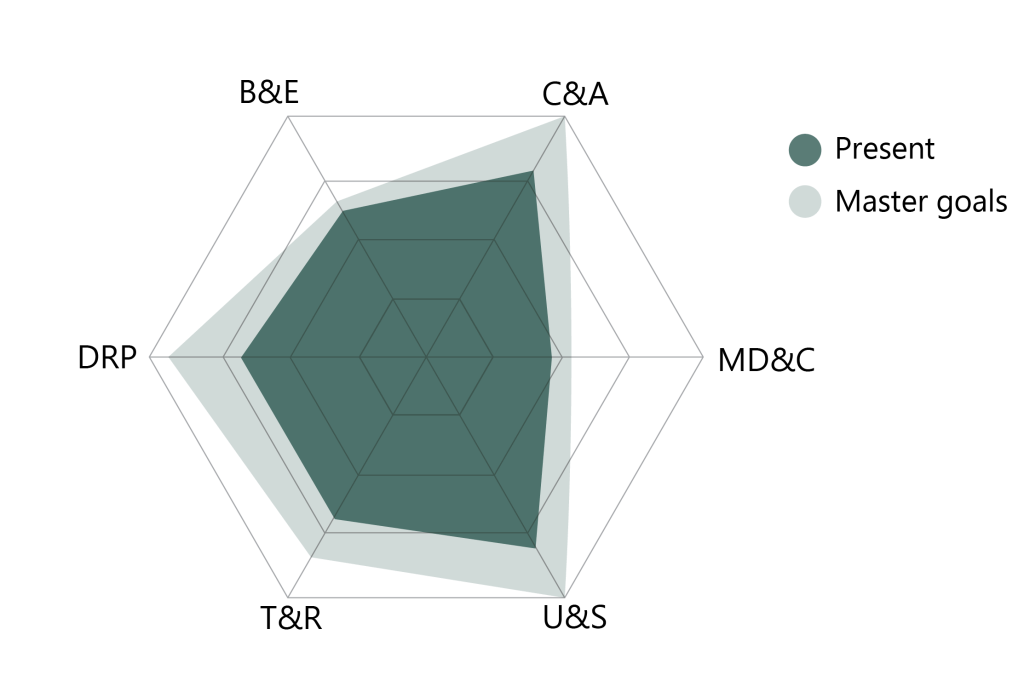

User & Society
What does it mean to me?
Being a human-centered designer is the core of my identity. I see design as a tool to create a more inclusive society, which begins with understanding the people and context. User & Society means to me designing with people and not just for them. It’s about getting to know the people behind their diagnosis and understanding the context to create meaningful and adaptable designs.
Development
In my first year, the courses Ethics and User-Centered Design laid the foundation for becoming a human-centered designer. I learned to conduct interviews and use tools like personas and customer journeys, which I could quickly bring to practice in Project 1. Through the course Intercultural Design, I became aware of how we unconsciously include cultural biases into designs. It showed the importance of user engagement to go beyond assumptions.
In Project 2, field research was a crucial part of our process. By engaging with people with dementia in their environment, we found challenges that were not uncovered with literature research, shaping our project. Within Project 3, I built on this by using ethnographies in Repair Cafés. These experiences showed me how embedding myself in the user’s world uncovers the real needs and improves me as an empathic designer.
My FBP put all previous knowledge together through a human-centered design approach while working with experts. User & Society was the core of this project because all children are different and thus have different needs. Combining the input from therapists and an innovation expert with literature research was the foundation. Due to ethical reasons, children were only incorporated through observational studies in the beginning and user tests at the end. Still, this showed insights that could not have been given by experts. Seeing the positive reactions of the children to the improved design affirmed my belief in the power of human-centered design.

Creativity & Aesthetics
What does it mean to me?
I am most passionate about the initial phase of the design process, where I turn user research into concepts. Creative thinking throughout the ideation phase plays a crucial role in this. Moreover, I believe that aesthetics play an important role in the user experience, and therefore pay specific attention to details such as visual coherency.
Development
Throughout the bachelor, I realized that diverse ideation methods help think outside the box. I explored diverse methods to see what fits me. I practiced sketching, brainwriting, interaction relabeling, roleplaying, and material-driven design. I found my preference for collaborative brainstorming, as I believe the best concepts are created when combining diverse perspectives and expertise. However, during my internship, I also learned how to spark my creativity while working independently. I preferred the combination of sketching and creating experience prototypes to iterate quickly.
From a young age, I had a passion for graphic design. During my Bachelor’s, I improved those skills by using Adobe tools for creating logos, posters, and visuals. I learned how to use this to communicate concepts to stakeholders, even when there is no physical prototype yet.
The ideation phase during my FBP required a new approach. Instead of starting from scratch, I reworked an existing concept. This concept of redesign taught me how to evaluate and brainstorm different aspects separately while creating a coherent experience. This thinking process taught me how redesign works in the work field. This process contained methods such as sketching, mindmapping, prototyping, and roleplaying.
Another challenge was designing a fun experience while limiting distractions. I designed icons and smileys, and selected materials and colours based on usability and coherence. Seeing the impact of those details during the user tests showed me how the aesthetics play a vital role in the experience.

Technology & Realization
What does it mean to me?
Technology & Realization is about bringing ideas to life by creating prototypes. I believe prototypes should be created with a clear purpose in mind. Being able to create interactive prototypes is essential to gather valuable stakeholder input. Over the years, I found that even simple prototypes can spark conversations when focused on the right aspects.
Development
In my first year, I followed the courses Creative Programming and Creative Electronics to gain skills in coding and electronics. I did not apply those skills in all projects, but selected the fidelity and tools based on the prototype’s purpose. Within Project 3, I challenged myself to improve my electronics skills as preparation for my FBP.
I improved realization skills by working with various materials and machines, such as laser cutting, 3D printing, and woodworking. Project 1 built a strong foundation by building a supermarket where technical drawings were necessary. Beyond the courses, I explored working with fabrics by sewing and crocheting clothing items. Moreover, I learned 3D modelling via Blender and Fusion 360. I still want to develop these skills further to prototype quickly and communicate concepts effectively.
As design can be physical and digital, I used Project 2 to learn how to create interactive apps via Figma.
Within my FBP, I brought together realization skills with the prototype’s purpose in mind: an interactive system to user test. After a thought-through material selection, I created the boxes through laser cutting, after which I spray painted them for a clean finish. The handles were hand-sewn from faux leather. The learning through making approach allowed me to gain insights and iterate quickly. I plan to use this in future projects, as it helps me to find flaws in initial design decisions.
Creating the interface in Figma was the biggest challenge, as it had to be responsive to customization settings. This required using conditions in Figma, which was new to me. As creating personalized experiences is a big part of my vision, this is a valuable skill to integrate into future projects. To make this interactive through a button, I programmed this through Arduino and Processing. Overall, this project showed me my ability to combine digital and physical prototyping skills to create an interactive system.

Business & Entrepreneurship
What does it mean to me?
For my Business & Entrepreneurship is about being able to make an actual impact with economically viable designs. I connect this area strongly with User & Society, since understanding the user is necessary to position a product in the market and to reach the target group.
Development
Through diverse courses, I built a strong foundation in this area. In the course Introduction to Business Design, I learned to use tools like the Business Model Canvas, SWOT analysis, PESTEL, and Value proposition canvas. Afterwards, I implemented those in the course Design Innovation Methods for the company HEMA. Here, I discovered how these models help identify business opportunities. During the projects, I was mostly interested in design & branding, being able to use my graphic design skills to ensure products align with the target group. Therefore, I created the branding for both Project 1 and 2.
Within my internship at Philips, I saw the real-world impact of this expertise area. Benchmarking was crucial to ensure originality and avoid patent conflicts. Moreover, I learned the importance of evaluating technical feasibility and production costs in order to design a product with market potential.
I started the project by benchmarking to find the market gap that I am designing for, which later guided design decisions. Moreover, I worked closely with a client, which taught me how to balance client input with my design vision. As I struggled with this initially, I learned how to critically evaluate options by putting the end-user first. Lastly, I created a business model canvas and explored the market potential to make as much impact as possible.

Math, Data & Computing
What does it mean to me?
For me, Math, Data & Computing is a tool to complement me as a human-centered designer. I see its importance in gathering and analysing quantitative data to find patterns, but also differences in individuals. In the future, I would still like to explore how this data can be used to create personalized products tailored towards each individual’s data.
Development
In the course Data Analytics for Engineers, I learned how to analyse data in Python by creating graphs and models. I brought those skills into practice during the course Making Sense of Sensors, where I used my own gathered data and analysed it afterwards. I found a strong connection to how this can contribute to my vision for creating more personalized designs, which I want to bring into reality during my Master’s.
During my FBP, I only did qualitative research, making it difficult to do data analysis. However, I used the expertise area differently to create an overview during the prototyping phase. In previous projects, I focused mostly on hardware and less on software design. As this was more of a weak side, this was a challenging experience. I created flowcharts, a deployment diagram, and a sequence diagram to map how the hardware and software are connected to the user journey. This helped me to prototype in a clear and structured way. These diagrams ensured I knew what I was doing, making me realize I am capable of creating interactive prototypes to gather valuable feedback from stakeholders.

Design & Research Process
Throughout my Bachelor, I developed a strong understanding of how to apply design and research processes. The first course, From Idea to Design, showed me the importance of having some sort of structure. Since then, I have used different approaches, such as the Double Diamond and the Reflective Transformative Design Process. Also, I got familiar with research through design in Project 3, which taught me the value of learning through making.
I believe a key development for me was applying human-centered design approaches. Here, I involve stakeholders throughout the entire process instead of only at the beginning and end. Through this, I started to not only design for users but also with them. I found that I prefer this approach framed in the RTDP process, to put a greater emphasis on the user and the societal impact.
The stakeholder collaboration is strongly linked to my research approach. Throughout the entire process, I use research to guide and validate design decisions in each iteration. I value combining literature research with field research. I use literature research for foundational knowledge, and field research, such as interviews, observations, and ethnographies, to find insights on a deeper level. I specifically used this during Project 2 and my FBP to deeply understand the users.
During my FBP, my design process was framed in the Reflective Transformative Design Process with a human-centered approach. The design consists of different aspects, which were explored and iterated on in parallel. The close collaboration with a therapist and an innovation manager allowed me to validate, reflect, and iterate continuously. I value this repetitive cycle as it showed that it leads to a better design more quickly. Research was a core aspect in the entire design process through literature research, observatory studies, stakeholder input, and user tests.

Professional Skills
I believe collaboration is essential in design projects. My internship at Philips highlighted the importance of cross-cultural communication skills in global design teams. Therefore, I followed the course Intercultural Design, allowing me to adapt to diverse perspectives and communication types. I combine this empathy with my organizational skills to create a structured and supportive work environment.
Doing multidisciplinary group projects taught me that communication barriers also arise among disciplines. I used my knowledge from different areas to combine everyone’s perspectives to ensure all ideas were heard. I found that this is one of the strengths designers bring to the field.
As I started my Bachelor’s, my perfectionism caused me to want to be in control of everything. Recently, I learned the value of knowing when to step back. Reflecting on my leadership skills in the course Design Management made me realize I can be both a leader and supportive team member, according to what the team needs.
Lastly, my presentation skills developed significantly. During courses, I voluntarily presented to practice presenting naturally. This led to being able to present without too many nerves, making it easy to communicate concepts to stakeholders during my FBP.
Extracurricular Activities
Logo & Website design
In 2024, I designed a logo and developed a website for Popkoor Enjoy. This allowed me to gain experience working for a client and to improve my graphic design skills.
Popkoor Enjoy
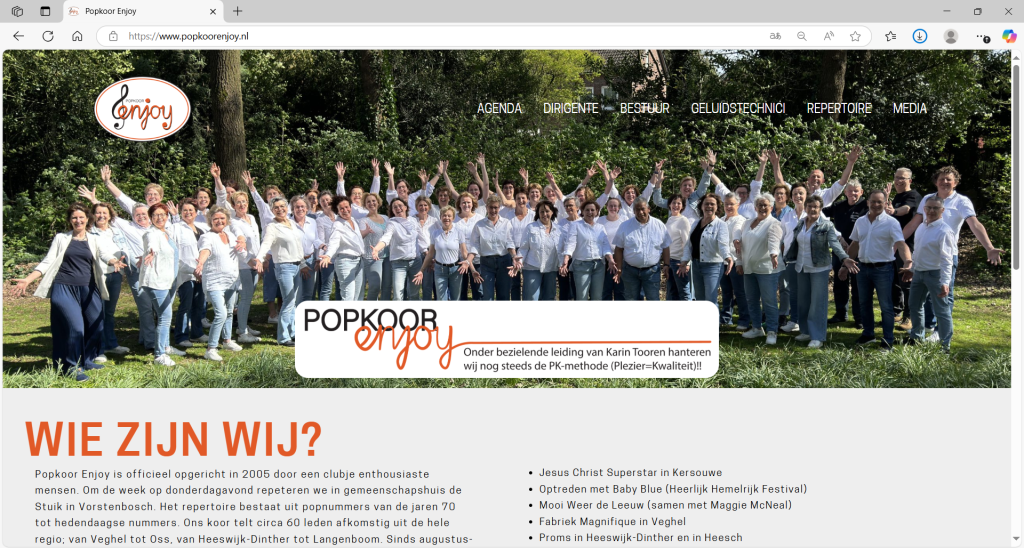
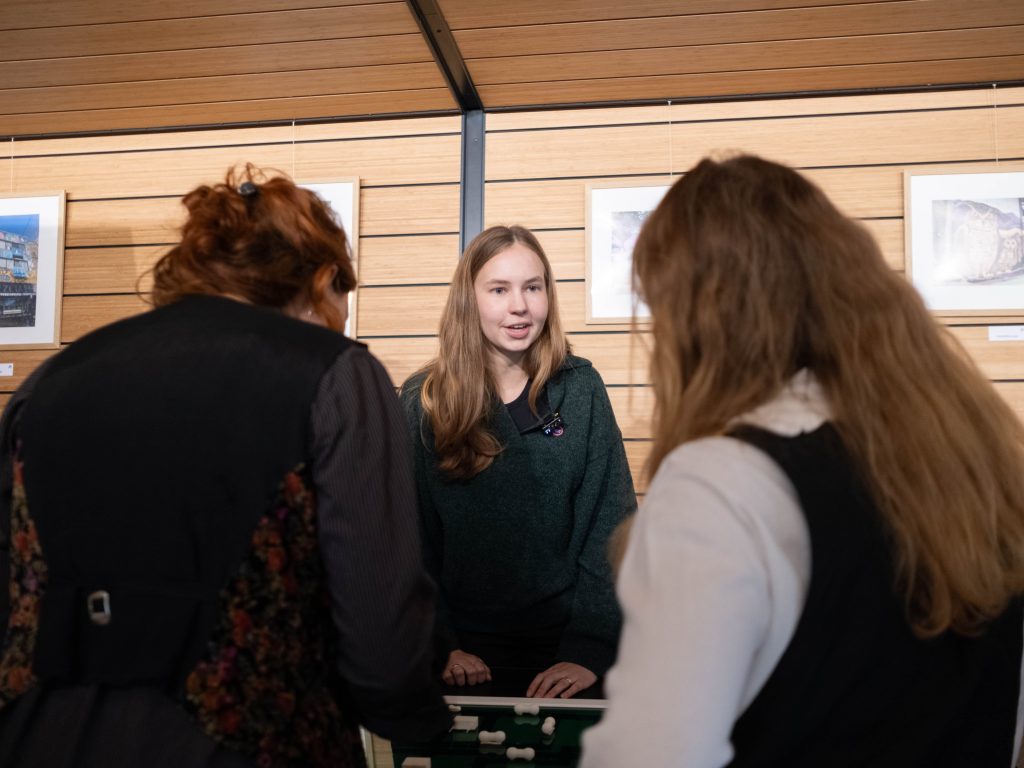
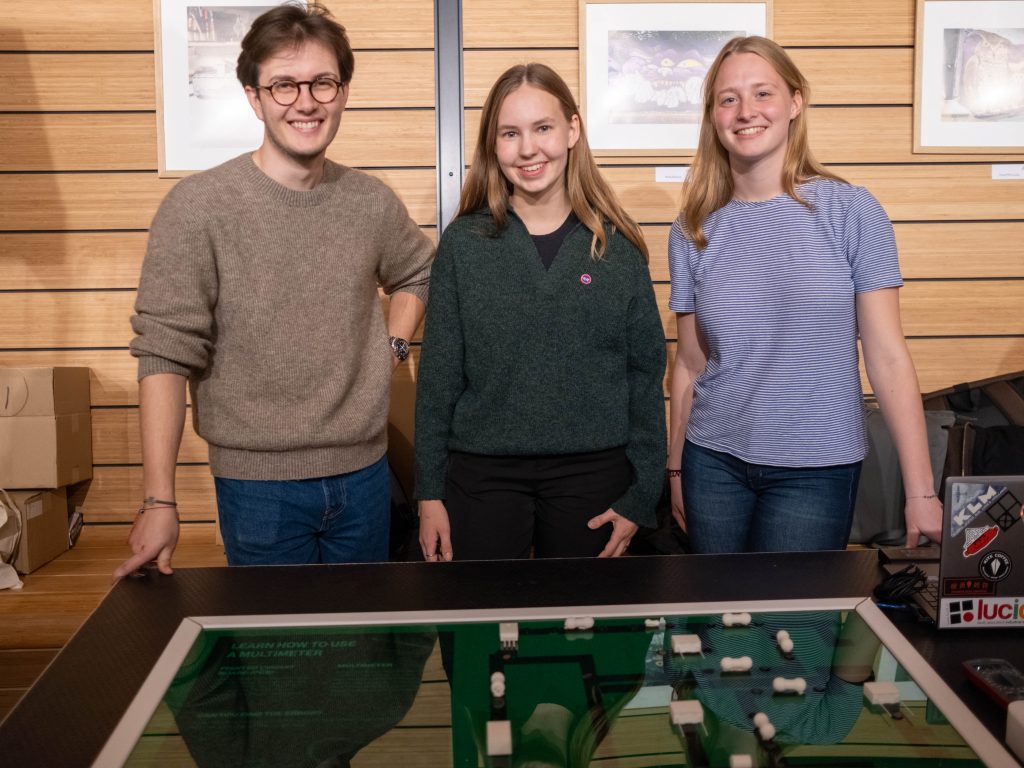
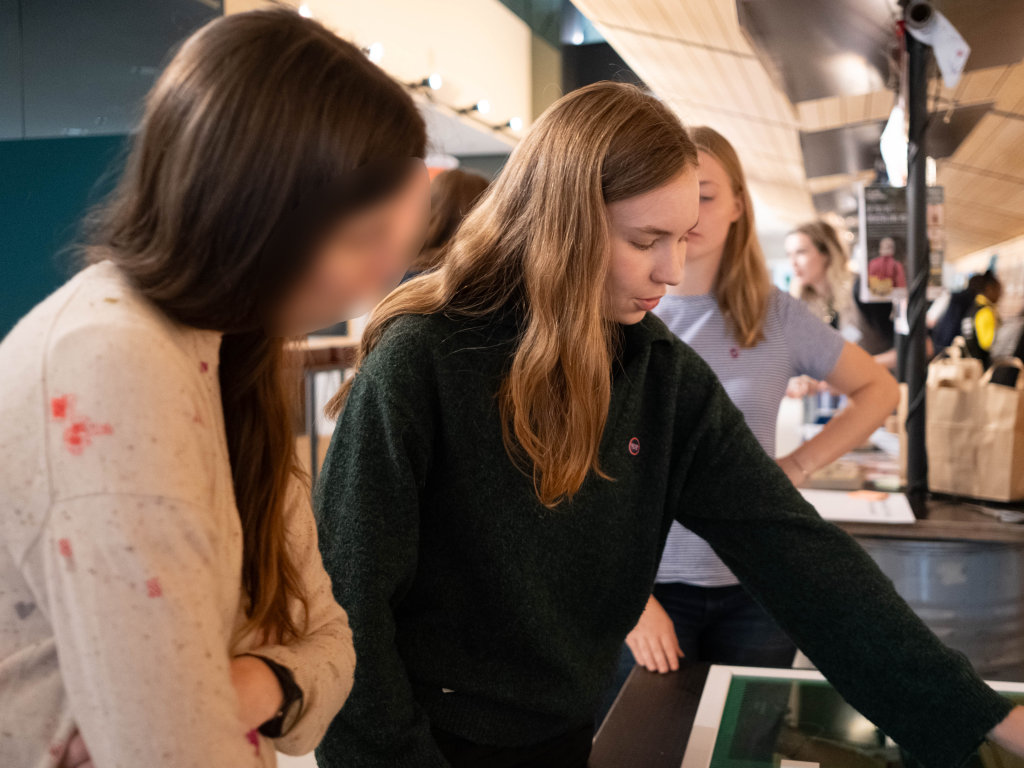
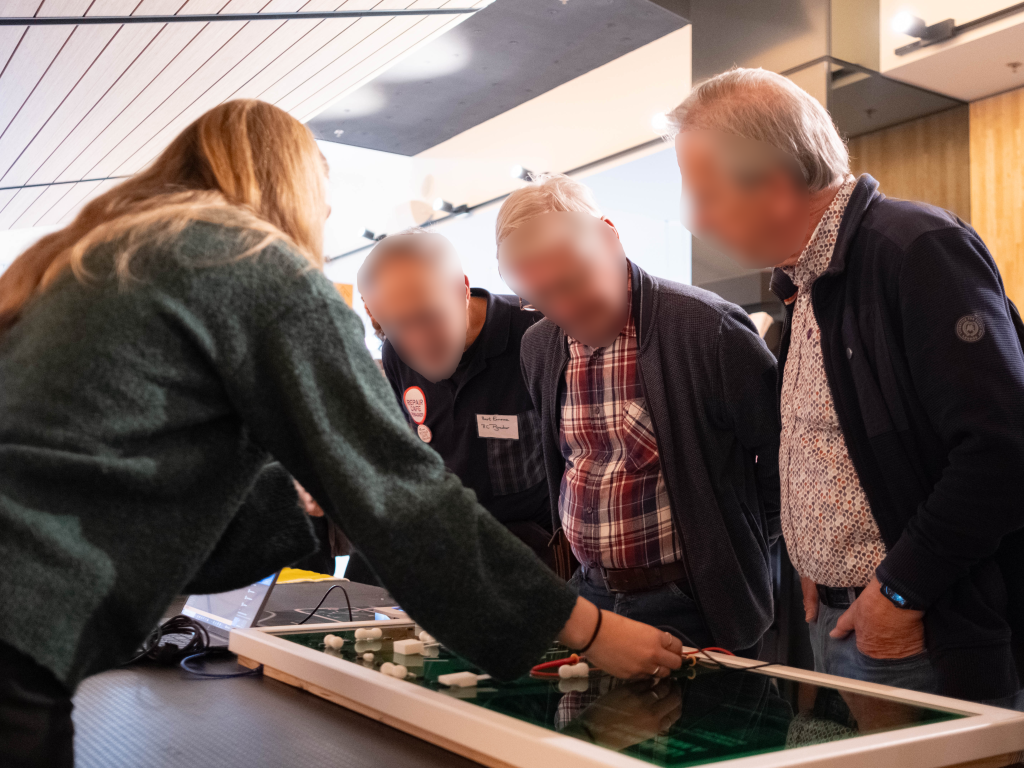
Repair Café XL Event
I presented FixGrid (Project 3), together with my group, at the Repair Café XL Event in The Hague. It showed the real-life impact of research through design by contributing to creating awareness for the sustainable and social aspects of Repair Cafés.
Koos Service Design
In 2023, I followed a Koos Service Design workshop about creating customer journeys. As a human-centered designer, I used this tool in future projects to ensure the product met the user’s needs and to decide what parts of an experience to focus on.


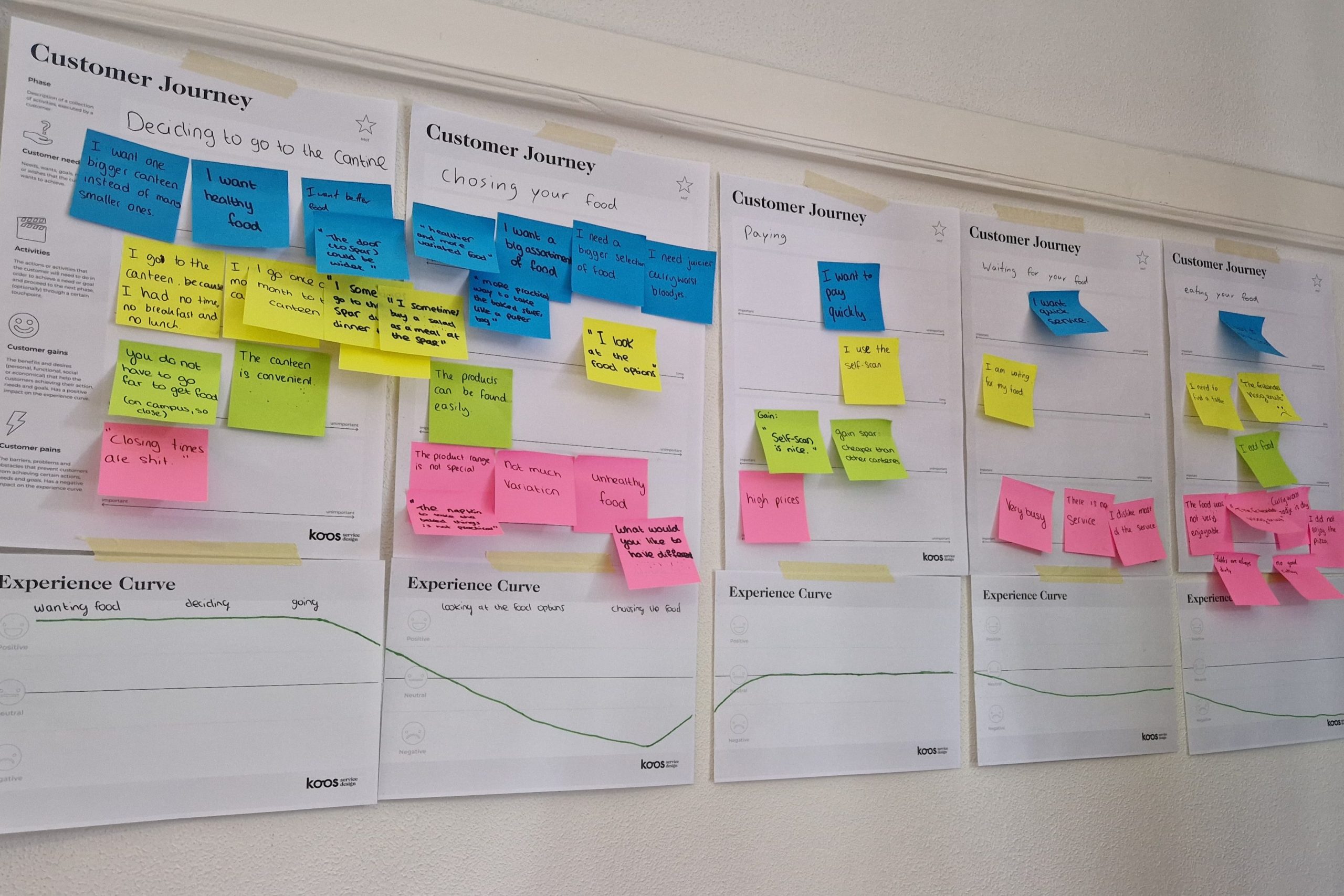





Some interesting designs at Dutch Design Week 2022.
Dutch Design Week 2022 & 2024
Visiting Dutch Design Week makes me think more outside the box through getting inspired by unconventional designs. This encouraged me to try different materials and led to following the course Design & Sensorial Form, where I explored the impact of materials on the experience.

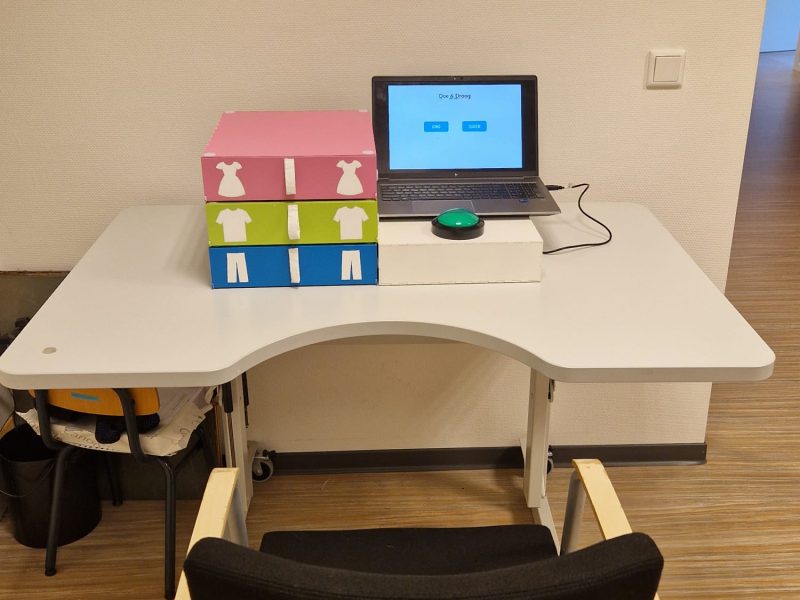
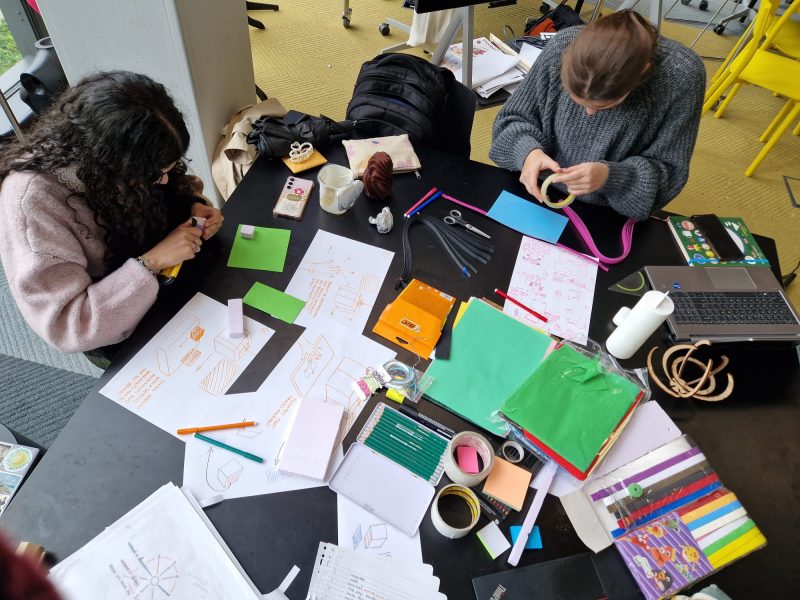
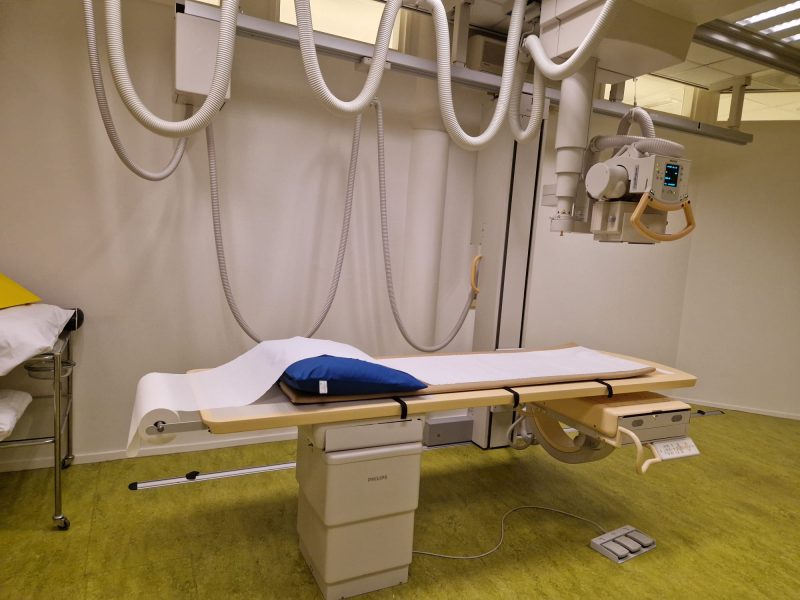
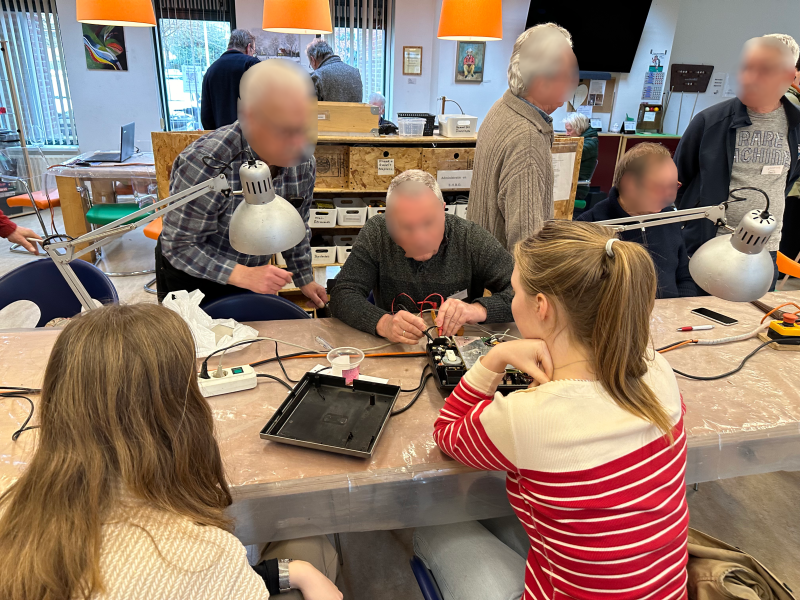

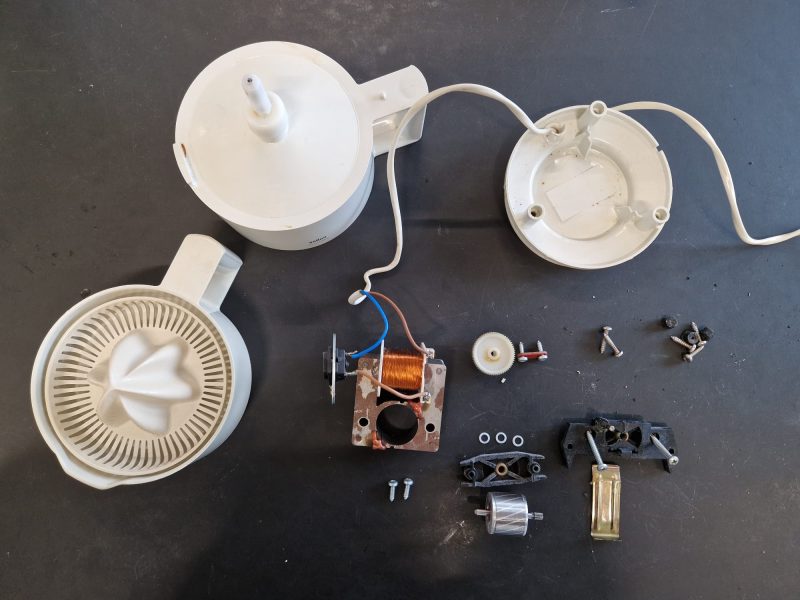

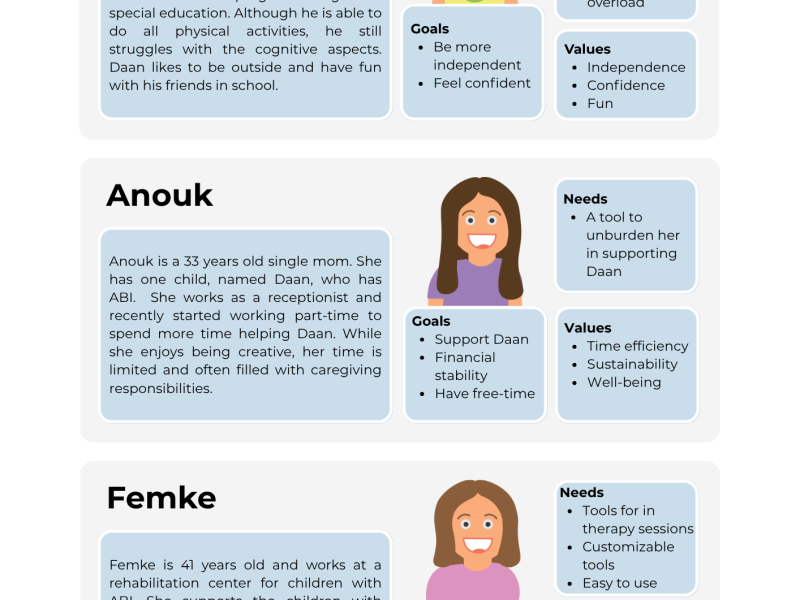

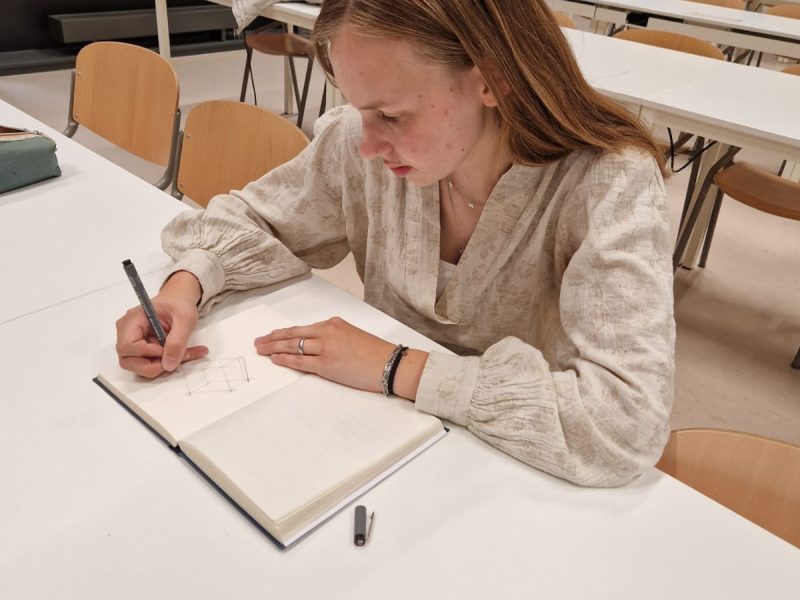
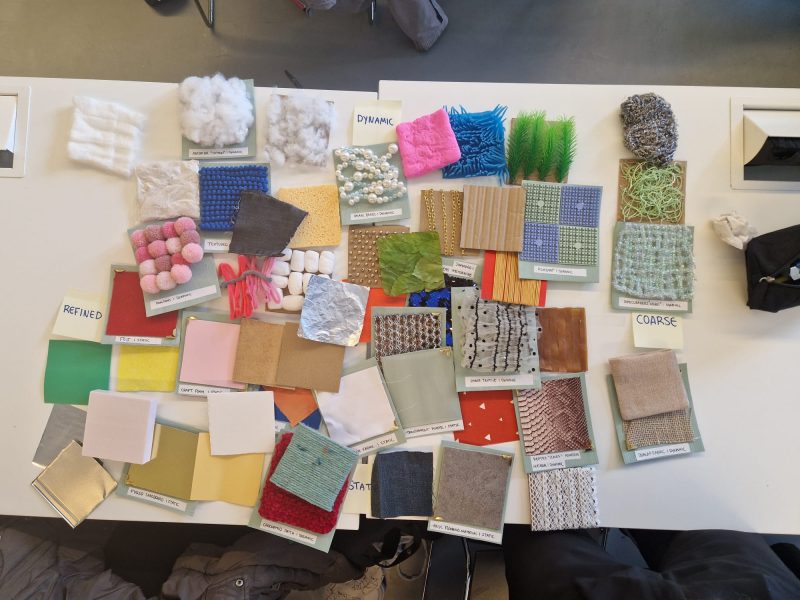
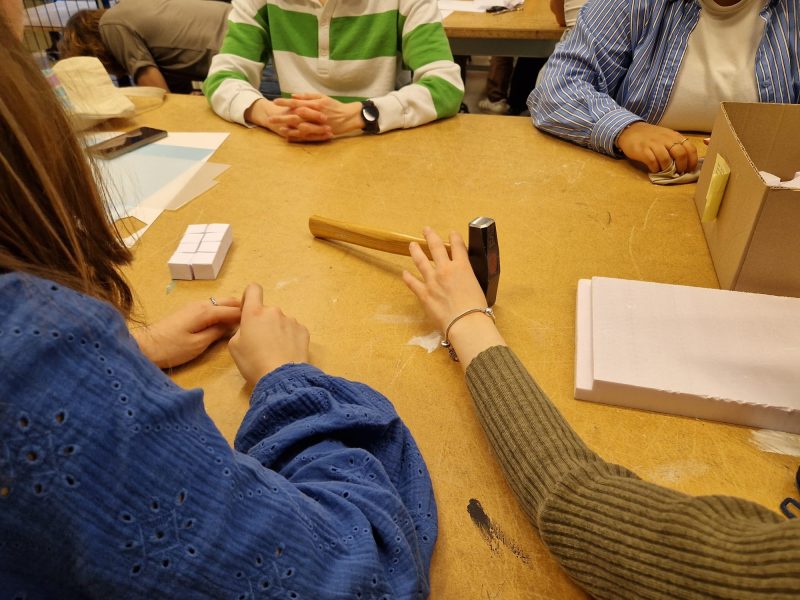
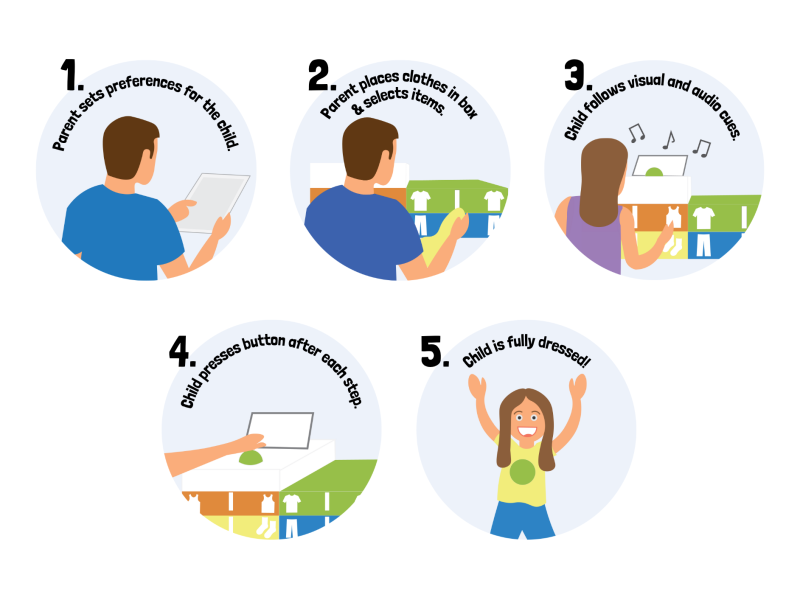
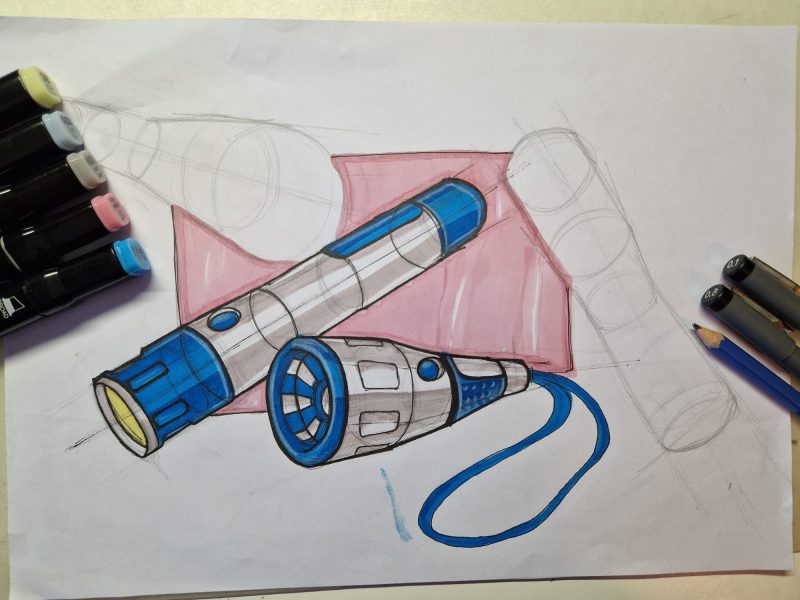
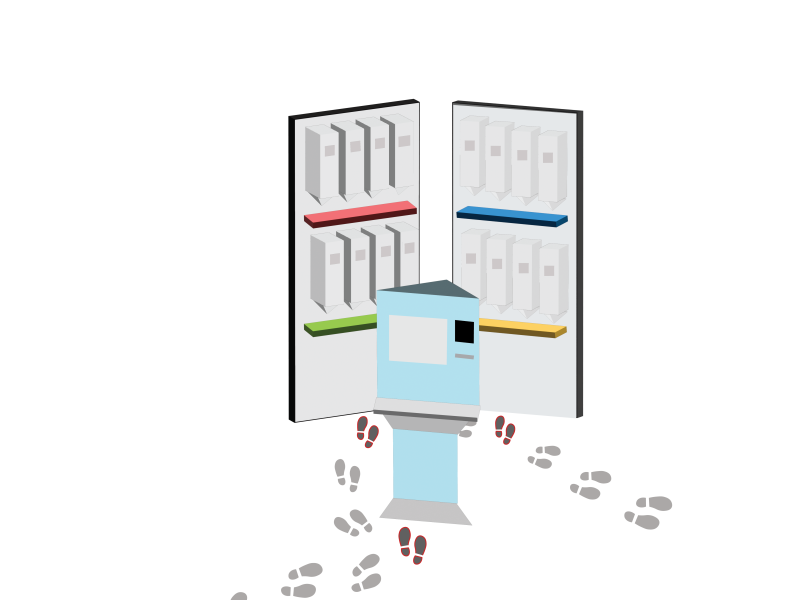


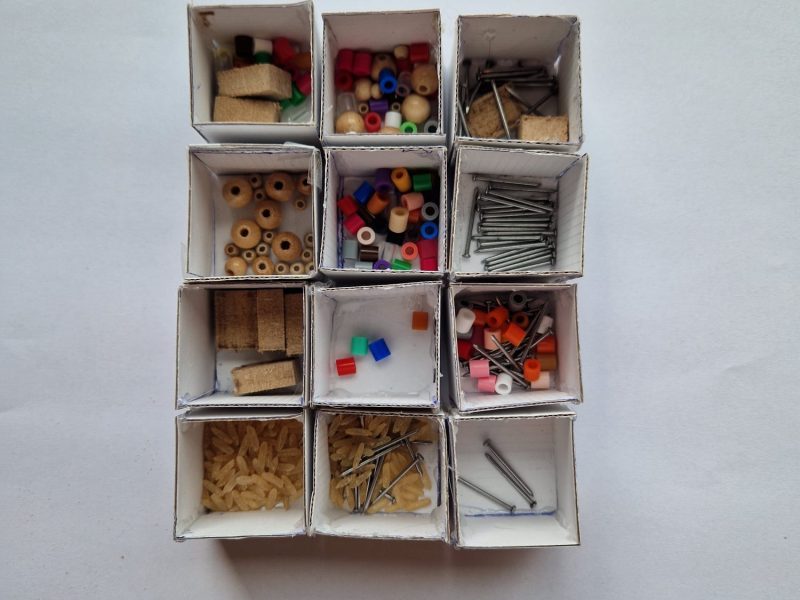
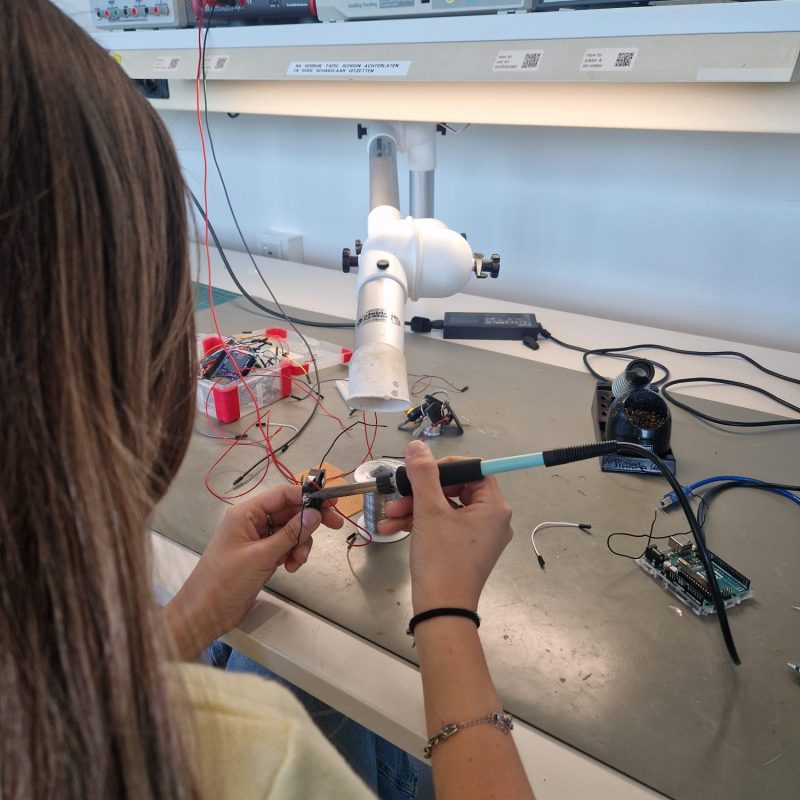
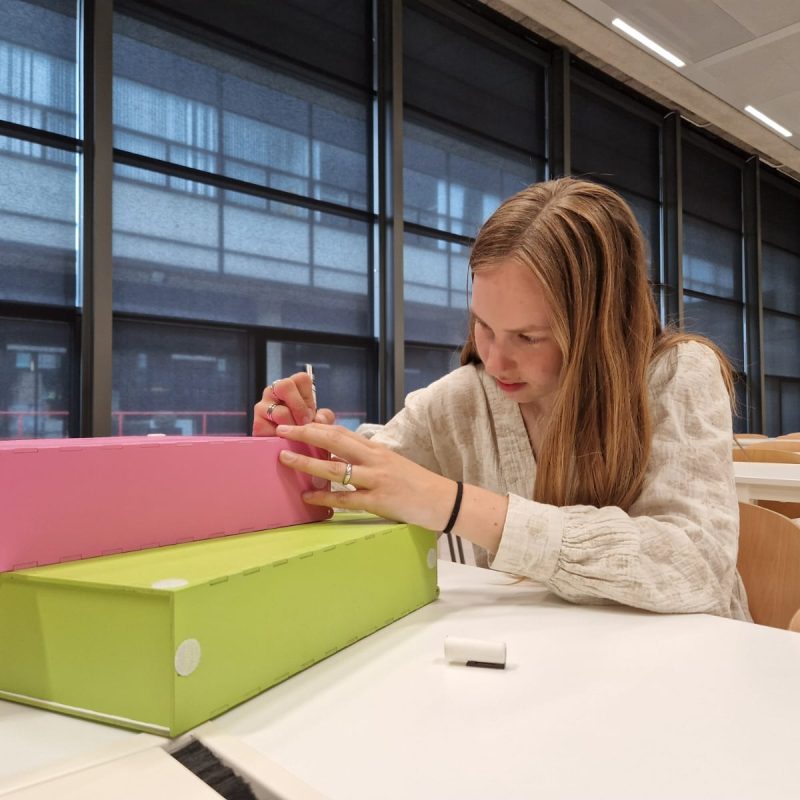
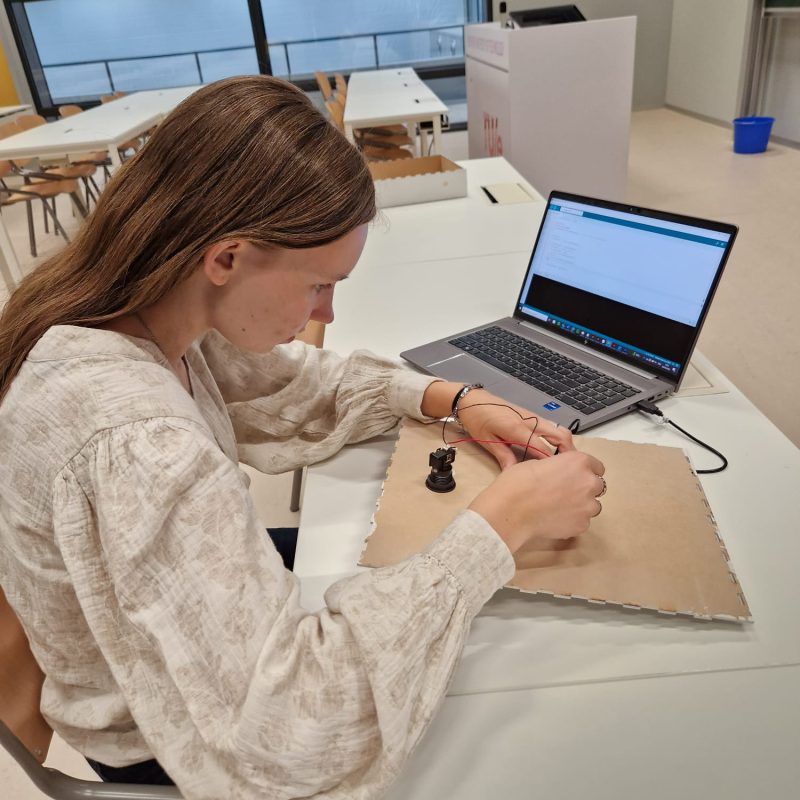

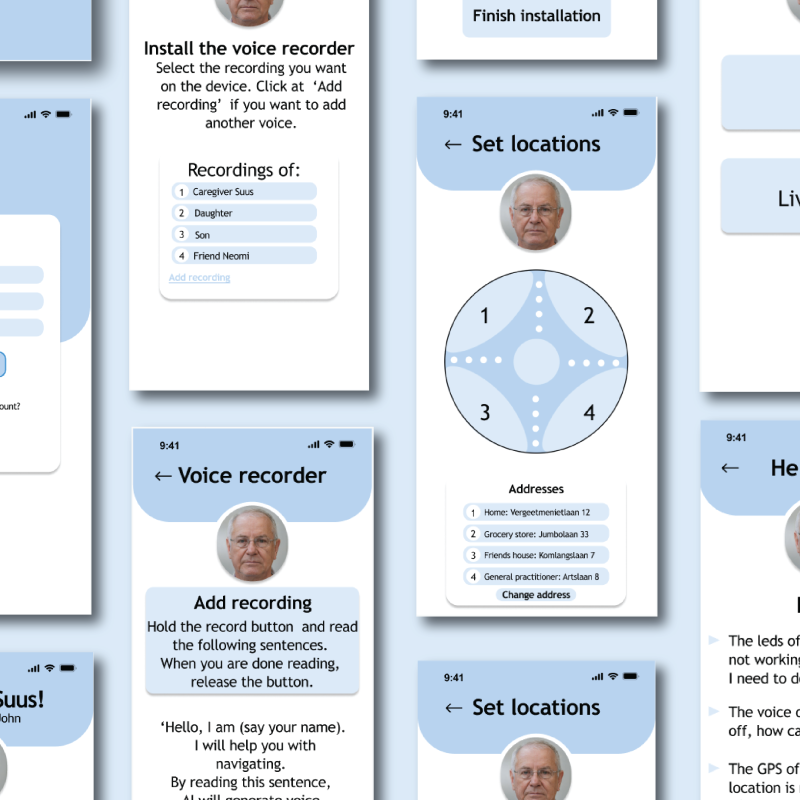


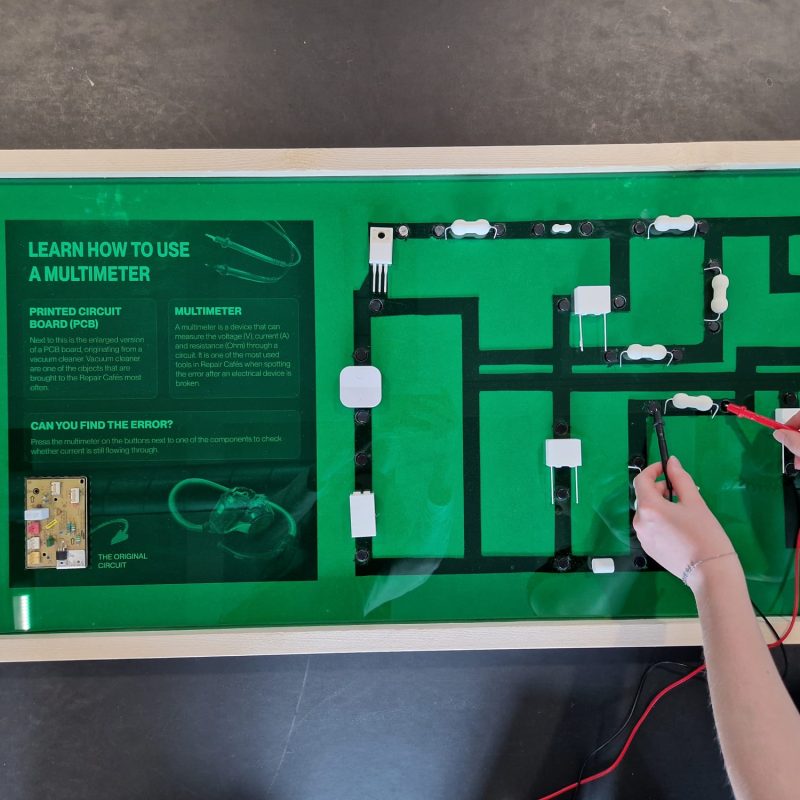

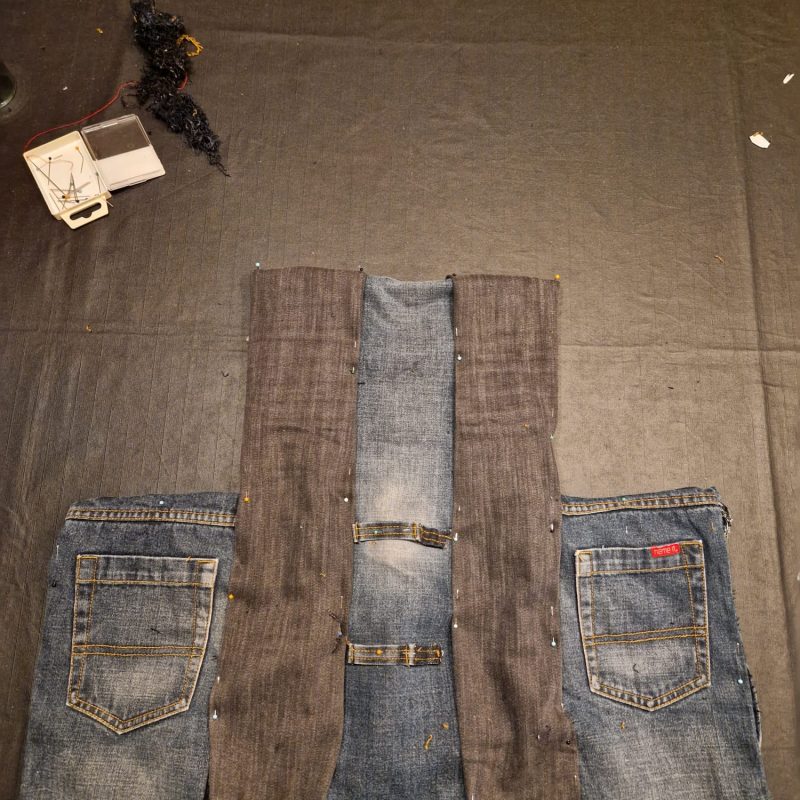



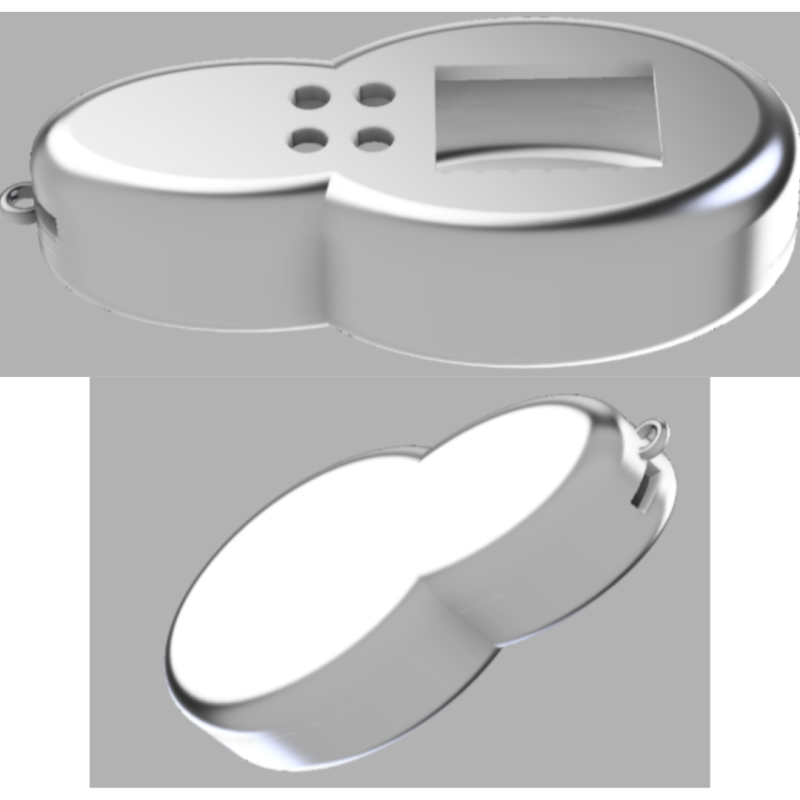
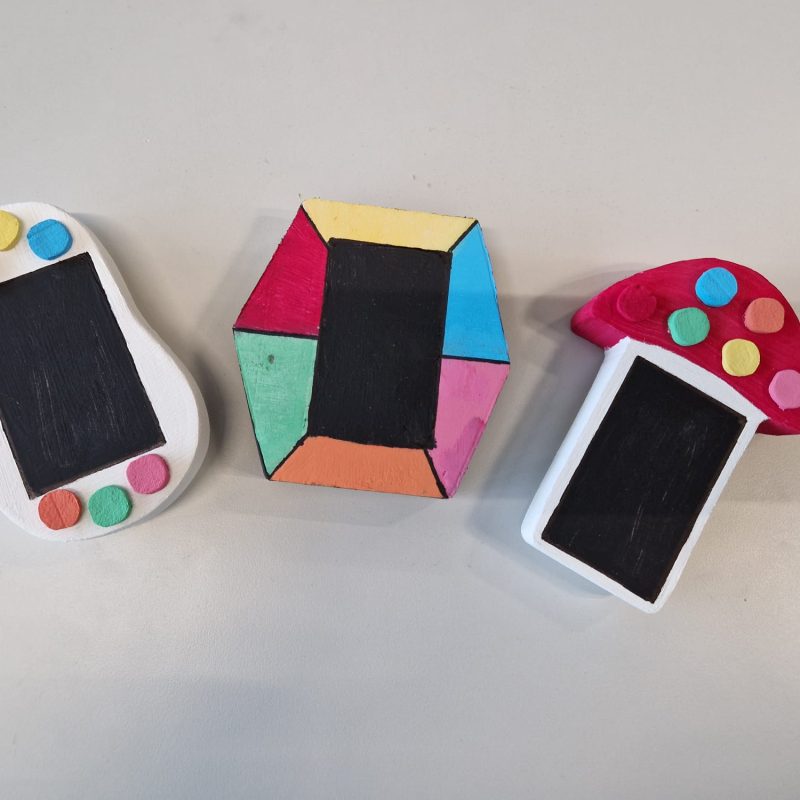
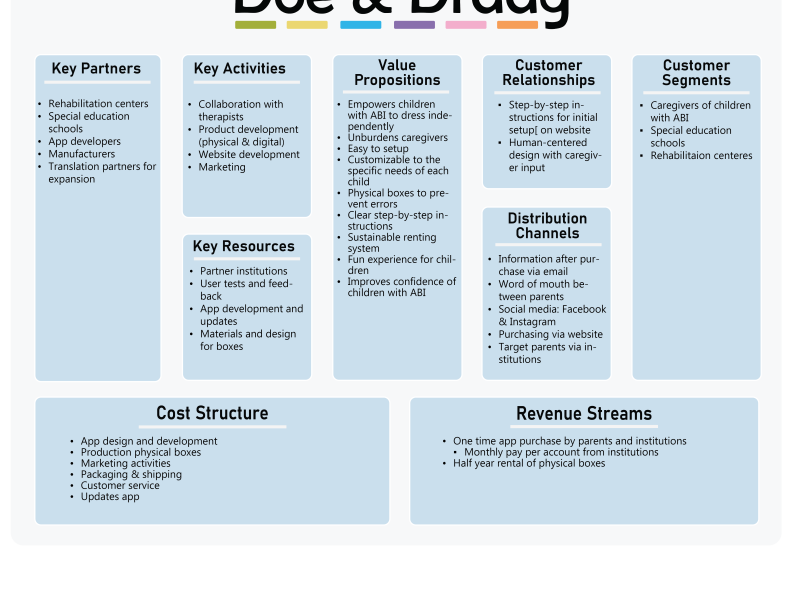
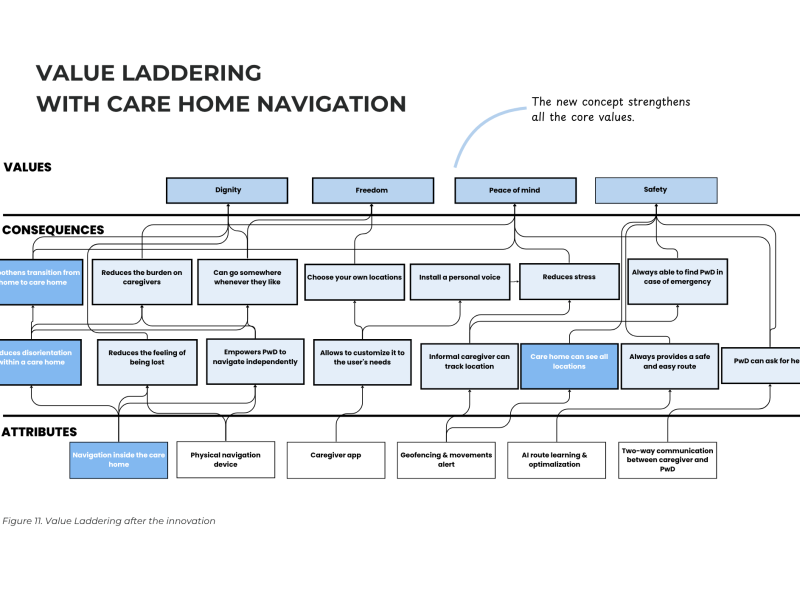

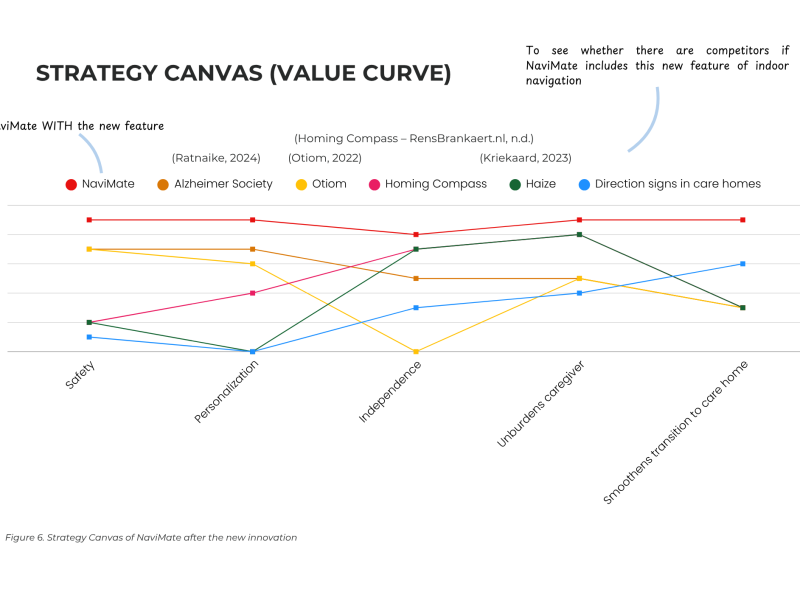




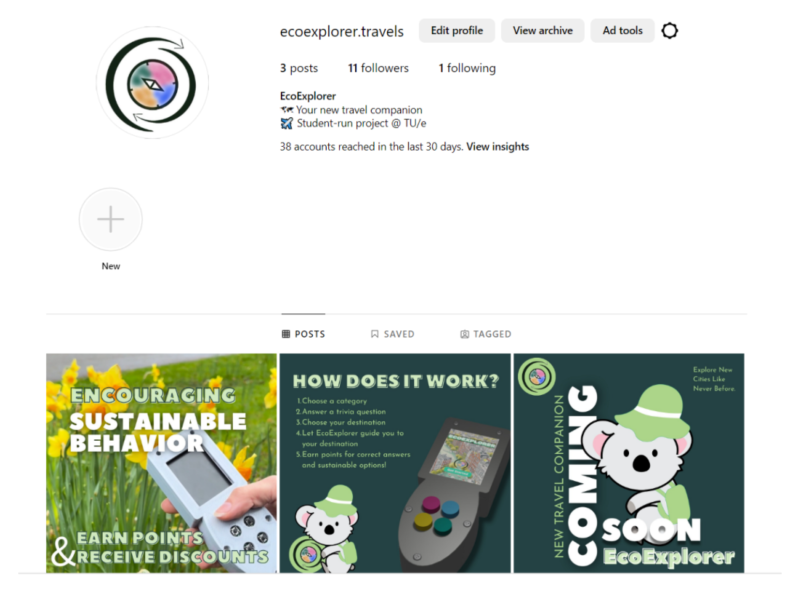
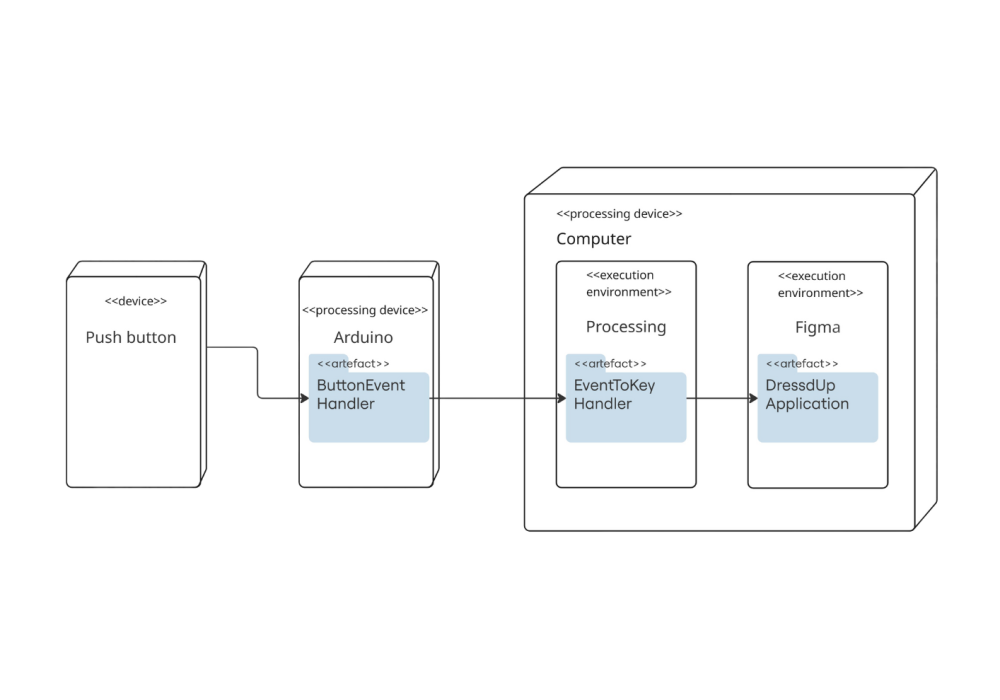
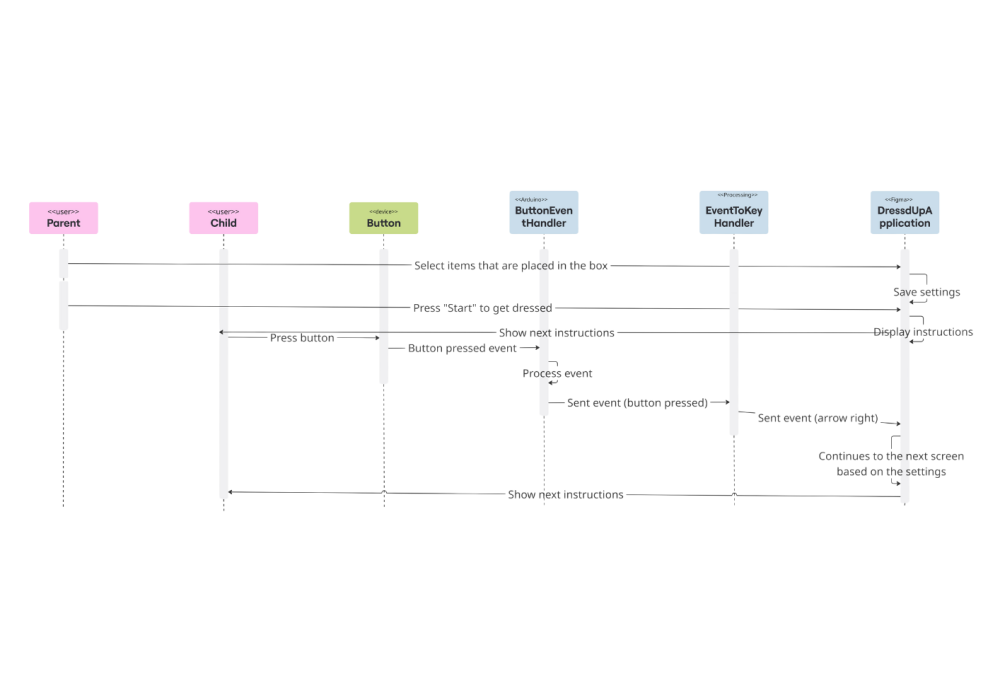
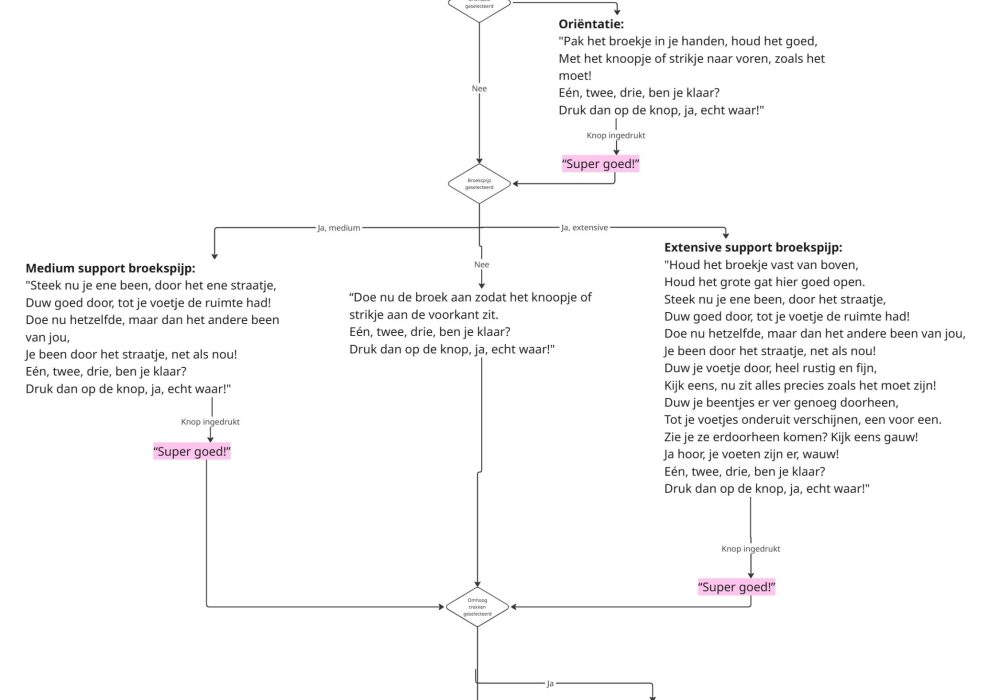
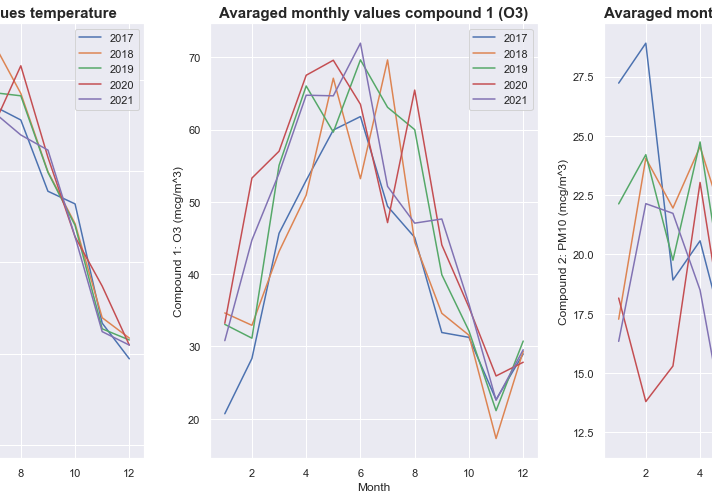
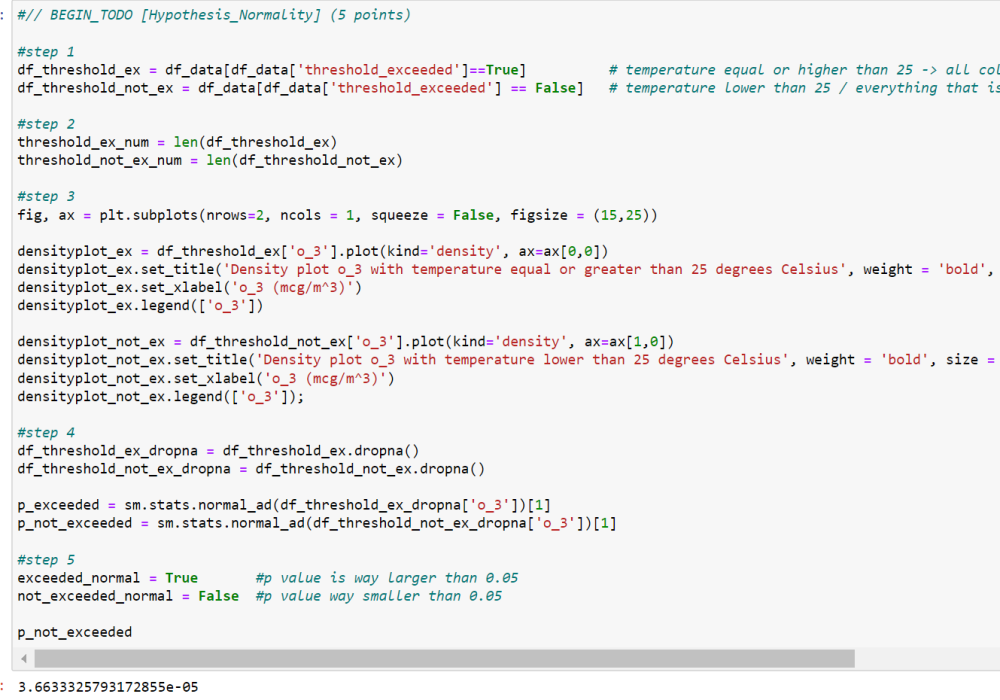
![20230618_222347[2186]](https://www.suusvangogh.com/wp-content/uploads/2023/06/20230618_2223472186-1-scaled-1000x700.jpg)
